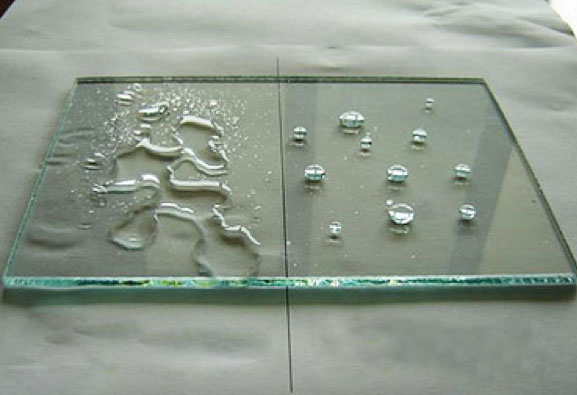The thing which should note earlier about self-cleaning windows is that they are not just “simple pieces of glass.” The outer layer of this glass is very thin made of titanium dioxide, a white, powdered titanium compound mostly known for giving that dazzling glimmer to paint, toothpaste, and entire kinds of other bright white things. Today if titanium dioxide is, basically, the white in white paint, it may appear to be ridiculous to sprinkle it all over a window—something we normally need all things considered. Be that as it may, the covering is ultra-ultra-thin. You can be putting layer 10–25 nanometers deep on the glass that might be 4mm thick, which resembles sitting a dime on highest of the Empire State Building! It diminishes the light going through the glass by close to around five percent.

How does self-cleaning glass work?
The titanium dioxide covering cleans through a one-two punch, two-stage process: it’s hydrophilic (water-loving) and photocatalytic (light-activated) —but let’s not gets confused by the jargon. Let’s discover out further…
Light-activated Photo:
It takes vitality to transfer dust from windows, nevertheless of whether they clean themselves. The ultraviolet part of daylight—the part that gives you burn from the sun—is simply the force cleaning glass.
Titanium dioxide is a photocatalyst:
This material makes chemical reactions that happen when a particular kind of light shines on it. The particular kind of light for titanium dioxide is the super-blue, ultraviolet (UV), high-energy part of sunlight that our eyes cannot see, but that, on the other hand, can give us sunburn even on an overcast day. When ultraviolet light strikes the titanium dioxide covering of a self-cleaning window, electrons are produced. These divert water particles from the air into hydroxyl radicals that make chemical oxidation and reduction reactions happen on the covering. The output of this is the hydroxyl radicals attack organic dirt and slice it up into small parts that are very easy for the rain to clear it. Since the reaction occurs on the titanium covering, on the remarkably surface of the glass, they attack the most reduced layers of the earth, relaxing covered mud from the glass sufficiently by chipping it away from the back to front (something conflicting to characteristic window cleaning, where you viably scrub the soil from the outside in).

Water-loving Glass is typically hydrophobic or “water-hating”:
Water fell onto glass be likely to “bead” (form droplets), while rain runs down windows in noticeable streams, leaving dirty lines as it goes. The titanium dioxide coating alternates all that: the hydroxyl radicals formed through photocatalysis create the glass water-loving or “hydrophilic.” In its place of staying in drops, water atoms spread out equitably over the glass in a very even sheet. So when rain hits a dusty self-cleaning window, it spreads across it like an incredible big cloth. Since the window is in all probability vertical or mounted at an edge, the sheet of water wipes down it flawlessly and equally, somewhat like an elastic squeegee, and the glass dries with no streaks or spreads. Magic!
Advantages of self-cleaning windows
Advantages self-cleaning windows seem great and the coating is meant to have to work for the lifetime of the window. They save money and time (cleaning of the window can be costly if you hire someone to do it) and help to evade the risk of accidents happening when people shake-up ladders with loads of water. People can get self-cleaning windows in numerous different thicknesses (naturally 4–10mm), with blue tints (to decrease solar glare in places such as conservatories), and with heat-reflecting inner coatings for better energy efficiency.

Conclusion:
Self-cleaning Glass is perfect for greenhouses, windows, building walls and glass roofs, particularly appropriate for construction parts that are not easy to clean.
Grand Glass China’s self-cleaning Glass has high organic matter decay rate: Our self-cleaning glass organic matter decay rate can reach more than 92 percent, which is higher than the 30 -90 percent decay rate usually seen in the market.
Free feel to contact us on grandglassmkt@126.com for more information.
